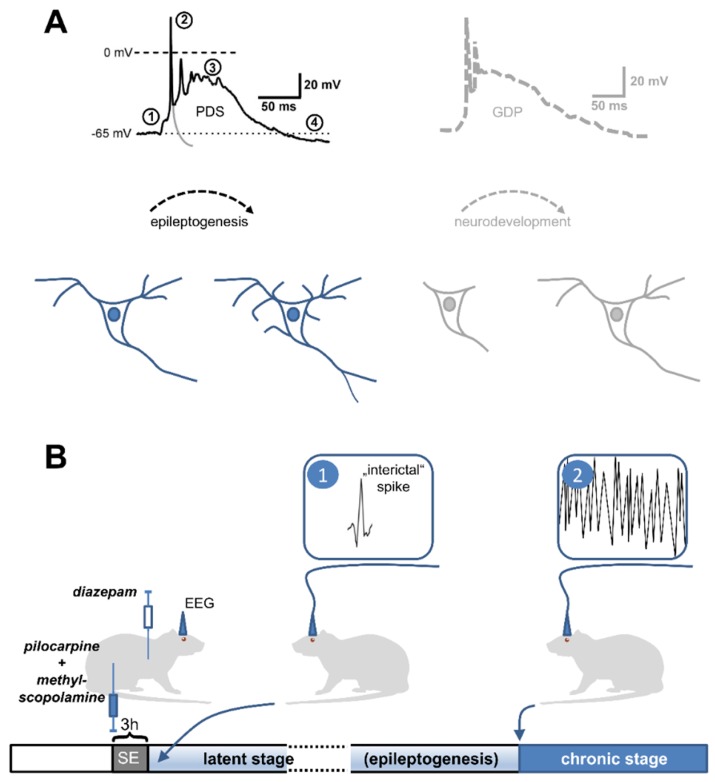Figure 1.
Observations in favor of an epileptogenic role of PDS. (A) Resemblance of PDS to giant depolarizing potentials (GDPs). The black trace depicts a typical PDS, which is synaptically triggered (1) and consists of action potentials of decreasing amplitude (2), a depolarized plateau (3) and termination by repolarization, sometimes below the resting membrane potential (after-hyperpolarization, (4) (to highlight the difference between a single action potential and a PDS, a hypothetical repolarization trajectory of the initial action potential is indicated by the grey line). This appearance is reminiscent of GPDs (an example is retraced in grey on the right side from a paper by Ben-Ari et al., 1989 [89]), which are widely believed to govern neuronal development [90]. In analogy, PDS may initiate various, potentially pathogenic neuronal changes. Neurodevelopmental (bottom right) and neuropathological morphological changes (bottom left) are indicated in schemes of a neuron below the traces. (B) Early appearance of electrographic spikes, the multi-unit correlate of PDS, in animal models of acquired epilepsy. Post-status epilepticus models are widely used in epilepsy research to investigate the mechanisms of epileptogenesis. In the pilocarpine version of this model [91], the cholinergic agonist pilocarpine is injected (together with non-brain-permeant methyl-scopolamine to avoid peripheral cholinergic side effects) into rats to evoke status epilepticus (SE). After 3 h, SE is terminated by the application of the benzodiazepine-type GABAA receptor modulator diazepam. Continuous electroencephalographic recording (EEG) is performed to monitor the appearance of ictal discharges (2), which typically starts after days to weeks (chronic stage). The time until the first occurrence of seizures is referred to as the latent (or silent) stage. Electrographic spikes (1) were found to occur within 24 h after the insult (here SE), i.e., at the starting point of epileptogenesis (it should be noted that these electrographic spikes are commonly referred to as “interictal” in the literature, although the term “pre-epileptic” would be more appropriate to avoid confusion with pre-ictal or truly interictal spikes).

